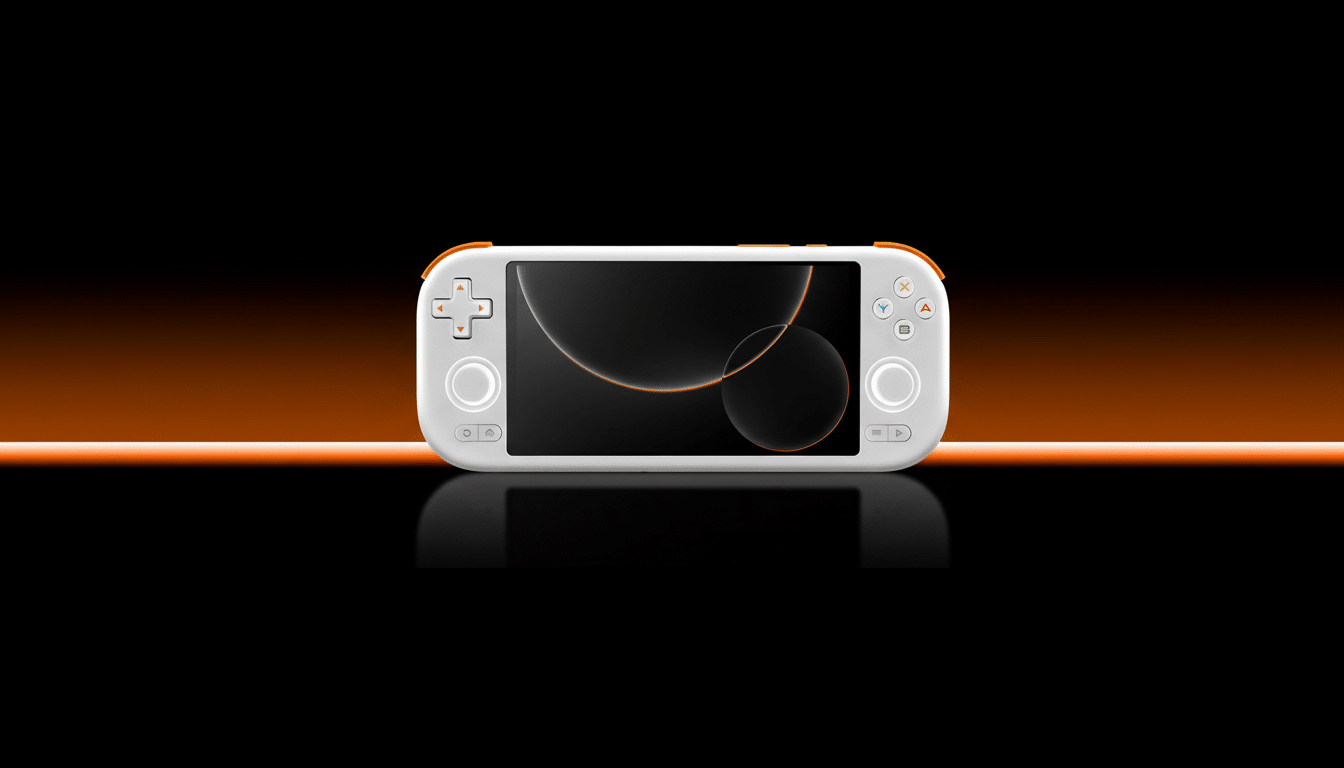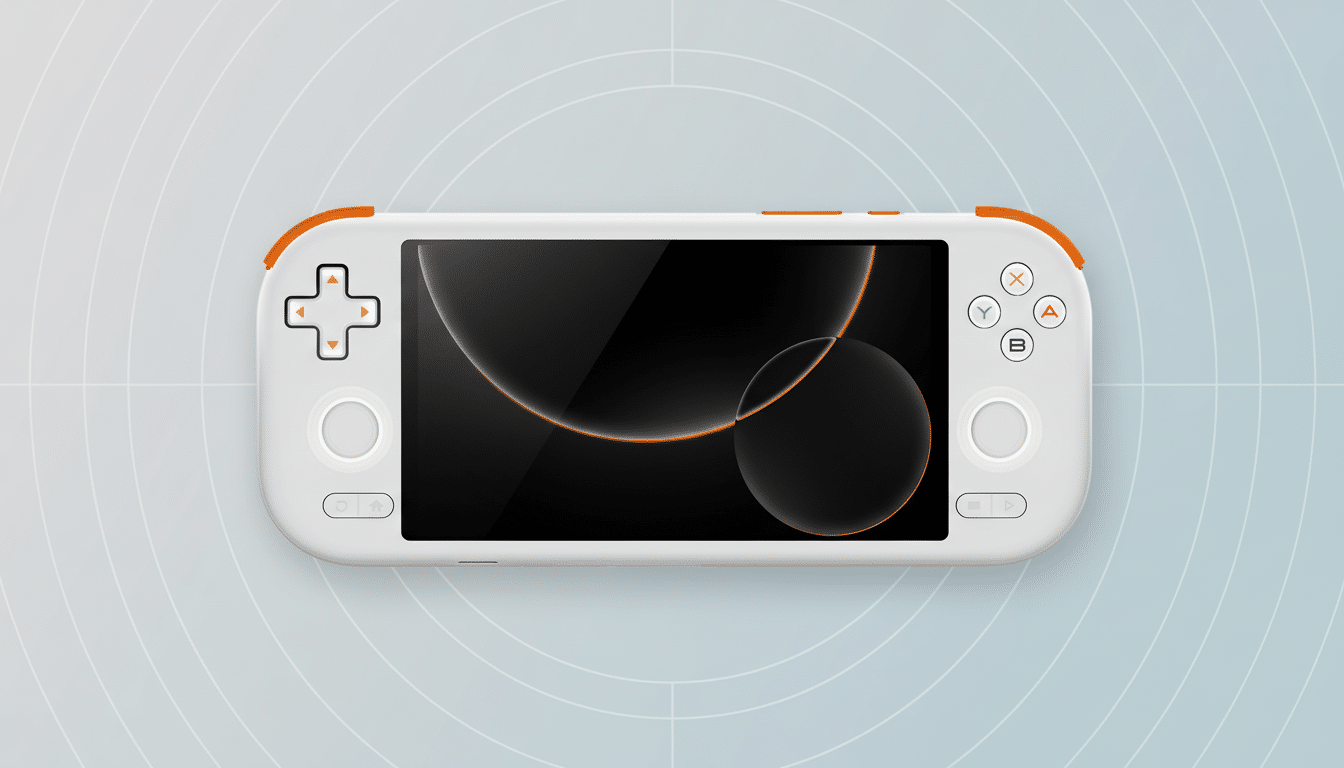The first handheld from Mangmi comes with a modest proposal and a fairly impressive execution: offer up a sub-$100 Android device that does PSP games justice in the looks and control department.
After some extensive testing, the Air X hits that bull’s-eye by combining a 5.5-inch 16:9 display with controls and performance optimized for upscaled PSP emulation without the setup hassles that tend to plague cheaper handhelds.
- Why this handheld nails the PSP brief and experience
- Performance where it counts for upscaled PSP play
- Emulation and game streaming results on the Air X
- Software that doesn’t meddle with your setup
- Battery life, charging speed and storage best practices
- Price and competitors in the sub-$100 handheld space
- Bottom line: a focused, affordable PSP-first handheld

Why this handheld nails the PSP brief and experience
16:9 is how PSP games were designed to be played, and the Air X is just being true to that. Its 5.5-inch full HD IPS panel delivers many classic games at a clean 1080p with the screen set to 3x scaling, sidestepping both the letterboxing and squished UI you’d encounter on 4:3 or square‑ish alternatives. Well, it’s brighter and sharper than Sony’s original portable, and text clarity in role-playing games (RPGs) and strategy games is significantly enhanced.
Controls are equally thoughtful. A symmetrical D-pad design recreates the ergonomics for precision; dual clickable analog sticks, shoulder buttons and triggers, and a comfortable, ergonomic shape with a solid grip make it easy to handle for long periods. Shoulder microswitches, analog triggers, and soft, rounded grips sit in the hand nicely for long sessions. It’s not jeans‑pocket small, but the chassis doesn’t feel creaky—good news at this price.
Performance where it counts for upscaled PSP play
Powering the whole package is Qualcomm’s Snapdragon 662, with Adreno 610 GPU — an 11nm system-on-a-chip platform that can be found on newer budget models on paper. Early benchmarks from public tools like Geekbench and 3DMark suggest it ranks below MediaTek’s Helio G90T and Qualcomm’s Snapdragon G1 Gen 2 in raw performance. But the real-world emulation story is more complex: given that, beneath GameCube and PS2, all three of those chips are effectively on the same tier, I suspect the Air X wrings out the appropriate balance for PSP and below.
Which is to say, the vast majority of the PSP library chug along just fine at 3x scaling, while anything more demanding than around a generation above continues to be hit-or-miss even on pricier rivals. If you’re looking for the PSP era and earlier, you’re not losing a lot here by scrimping on this either.
Emulation and game streaming results on the Air X
In my experience, testing with the popular emulators from RetroArch’s ecosystem as well as a few standalones — performance is hit or miss and falls within the PSP sweet spot. Both racing and character action work pretty well upscaled, with less texture shimmering at screen corners, etc. Layered UI remains readable. 8-bit and 16-bit platforms are even less demanding, but still pillarbox on the 16:9 panel — a small price to pay for nailing PSP.
The wide screen also helps make the Air X a useful sidekick for streaming. It doesn’t have the newest Wi‑Fi standards, but local streaming via Steam Link or Moonlight works perfectly fine. 5.5 inches isn’t massive for text-heavy PC games, but latency is at least acceptable on 2D fare: platformers, indies, and turn-based efforts.

Software that doesn’t meddle with your setup
Out of the box, the Air X comes with preinstalled, preconfigured emulators, breaking down a wall for newcomers who’d rather play than tweak. Mangmi’s optional Game Launcher is a workable if rudimentary choice — no automatic art scraping and the theming options are minimal, but it does feature a utilitarian list layout. And if you care about presentation, community-favorite frontends like Beacon or Daijishou provide a richer library browsing experience complete with artwork and sorting that plays well with the device’s aspect ratio.
You get the same benefits of a broad Android base: effortless cloud saves, Bluetooth peripherals, and the ability to play mobile games that work well with controllers. Demanding titles like unfurling open-world action RPGs are out, but retro-, indie-, and 2D-related Android games work wonderfully on the Air X.
Battery life, charging speed and storage best practices
The 5,000mAh battery lasted around six hours of PSP gaming in our tests, extending past eight hours for 16-bit greats. A 15W charger filled the pack in roughly two hours, and standby drain was minimal courtesy of Android’s background power management. With any lithium-ion device, safe storage and partial charges are key — the repair experts at iFixit and guidance from the U.S. Consumer Product Safety Commission recommend storing long-term levels around 40–60% to maintain health.
Price and competitors in the sub-$100 handheld space
Priced at a very competitive $89.99 MSRP, the Air X even undercuts many entry-level Android handhelds and used PSP-3000s on reseller marketplaces. It also costs less (even with its own built-in screen) than a typical mobile controller add-on but offers a better screen and complete standalone operation.
If those aren’t your priorities, there are other options out there. The Retroid Pocket Classic has more CPU headroom, but the convex aspect ratio is less favorable for PSP. Alternatively, devices like AYANEO’s Pocket Air Mini offer a premium finish and an interesting power-to-price balance — or, for purists after lightweight OS builds and near-instant virtualization startups, something Linux-derived such as the TrimUI Smart Pro. None of them, however, achieves an Air X-like 16:9 PSP focus at this price.
Bottom line: a focused, affordable PSP-first handheld
The Mangmi Air X hits all the PSP fans’ buttons where it counts: 16:9 screen, great and responsive controls, plug-and-play setup, and rock-solid 3x upscaling — all for under $100. If you already own a more powerful handheld, it’s not a generational leap. But for a first purchase, a gift, or as someone’s dedicated PSP replacement, it is the new entry-level standard to beat.

